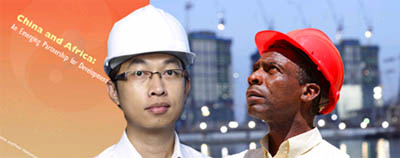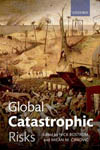
Welcome to the Club of Amsterdam Journal.
Our next two Season Events are about the future of the Living Room – Thursday, 13 October!

Experience interior design
and about the future of the Future – Thursday, 3 November!

The future of the Future is an examination of the various future vision as portrayed by futurists, academics and scenario thinkers. Most futurists who try to earn a living telling stories about the future quickly learn that a happy end sells much better than a tale of
troubles. Because of this the scenario’s futurists tend to publicly talk about tend to be wondrous tales of the Startrek/Jetsons world were our problems have been solved by technology and sensible policies based on rational thinking. Telling these tales, and support them with a lot of research data is a genuinely good way to help non specialists think beyond the usual limitation of their profession. But there is a danger in the fact that many futurists need to ‘sell’ their stories is influencing their objectivity.
Just as is it easy to tell a very positive story about the future it is easy to spin a vision were thing end very badly for humanity. But most
people don’t like bad news let alone pay for it.
Can we find a better method for forecasting? And will we want to listen to those forecasts? This is a serious challenge and we need more brains involved in solving it. May we count on you brain?
Concept: Arjen Kamphuis
…. interested in knowing more and sharing thoughts and ideas …. join us!
Felix Bopp, editor-in-chief
Limits to Knowing

By Patrick Crehan, Director, Club of Amsterdam, CEO and Founder, Crehan, Kusano & Associates
The way we think about the future has immense influence and impact on both our professional and personal lives. This is especially true for those who work in positions of responsibility for organizations and the people in them. They are the ones who decide on a regular if not continuous basis what time and money, human and material resources should be allocated to which activities so as to ensure optimal outcomes for themselves and their families, for their organizations and society as a whole.
The tools we employ to think about the future are constantly evolving. Our ability to gather store and process information about the past and the present state of the world is expanding at an extraordinary rate. Several pas Club of Amsterdam events have looked at the extraordinary pace of progress in sensing, connecting and computing. These have helped our members explore the consequences of how our ability to sense the present, combine it with knowledge of the past and simulate the future, has expanded at an extraordinary rate.
But it is worth while taking a look at the limits of our knowing about the future to see if we really understand how to use these powerful tools and ask if we really are on the right track, if we really are mastering the tools required to help us design and build the better worlds we want to create.
Swept up in the euphoria of technological progress, there is a risk of “irrational exuberance”, that we might overlook small issues of great consequence. For this reason it is useful occasionally to go back to basics and take stock of where we are and try to filter what is real from what is mere illusion.
The first reality check concerns the nature of our ability to model the world, simulate it and make predictions. Despite the extraordinary progress we have already made, and the very reasonable expectation that by the end of this decade we will have succeeded in feats as complex as simulating the workings of an entire human brain, there are real limits to what we can simulate and what we can predict. So far I am aware of at least 3 hard barriers to success in modeling and simulation, and there may be many more.
The first is a demonstration by the philosopher Carl Popper, about the impossibility of predicting the future. His argument is very elegant and relies on special relativity. Effectively he provides a proof that if the world is governed by the principles of relativity, then even if we have perfect theories, and infinitely fast computing capabilities, we will still never have enough information available to always make accurate predictions even arbitrarily small times into the future. Of course we will get away with ‘good enough’ most of the time, but he explains that there is a hard barrier between that and being able to guarantee getting it right every-time.
The second barrier has to do with the discovery of quantum mechanics and has to do with the ‘knowability’ of nature. The initial insights came from the work of Heisenberg and have been debated ever since. The general consensus is that it is impossible to simultaneously possess knowledge of arbitrary accuracy about the state of the physical world. In physical terms it means that we may know the position of a particle with arbitrary accuracy at a given time, but only by sacrificing accuracy in our knowledge of its state of motion. This is a hard limit on what we can know about the world and seems to be no way around it. Once again we can get by pretty well for most intents and purposes but bear in mind that many modern engineered products rely on relativity and quantum physics for their operation. Both relativity and quantum physics have left the realm of science and entered the realm of engineering many years ago. So these limits we refer to are real, impact our work and are faced by engineers every day.
The third major barrier is one which only really emerged or became clear in the 1970s with the discovery of what is called ‘deterministic chaos’. This has to do with a form of ‘unknowability’ that afflicts even old fashioned Newtonian systems. It does not rely on artifacts of relativity of quantum mechanics. It would exist even if quantum mechanics or relativity were not true. This insight into the limits of ‘knowability’ go back to the discovery of dynamical systems that can be modeled perfectly, for which solutions can be shown to always exist, but which can never be calculated by any algorithm with any degree of accuracy. These systems often appear random or chaotic, when they are absolutely deterministic. Even though we know everything about what drives these systems, we also know that we cannot simulate them in any reliable way. In practice what happens is that arbitrarily small errors in the measurement of the parameters of the system lead to arbitrarily large errors in the results of a simulation.
These are three hard barriers to what we can know from measuring modeling and simulating the world. There are others. Despite these limits we do pretty well and simulation can be a very useful tool when used in the right way. The spectacular collapse of Long Term Capital Management (LTCM) run by Nobel Prize wining economists is the text-book case of what can happen when the models are applied outside of their domain of applicability. We could move on from discussion about errors in simulations based on models to the impact of errors in the model itself, but that is a subject for another day.
Instead it is interesting to look at issues relating not so much to our ability to predict the future, but to our ability to control it. The future is highly subjective. No one creates it alone. Chance requires the cooperation or complicity of a great number of actors. It is an iron rule of change and it is true whether we are talking about change on the level of the global economy, a business unit or our personal circle of family and friends.
To affect change it is not enough for one person to know about the future, they need to bring along everyone else by forming change-coalitions for want of a better word. The starting point is creating and sharing relevant knowledge. This touches upon the philosophy and mission of the Club of Amsterdam, and there are many techniques for doing this. But even this is not enough. Given all the knowledge and understanding in the world, people may then need to act. This is the real barrier to making change happen, especially when we are looking at long-terms issues that do require an immediate solution. Such issues tend to get put off until it is too late. Making change happen requires not so much progress in simulation but progress in understanding factors such as motivation, confidence, courage, the will to act in ones own interest.
This was why it took about 50 years before clear and overwhelming evidence linking smoking to lung cancer became generally accepted. It is why even today people do things like smoking that they know will shorten their lives and limit the time they have to enjoy the good things of this life. Arguable it is also one of the reasons why progress is so difficult on issues such as climate change.
Despite the incredible progress we have made in out ability to collect and analyze data, model and simulate the world, make predictions about the future, we are still very poor in moving from knowledge to action.
Next Events

the future of the Living Room
Experience interior design
Thursday, October 13, 2011
Location: Museum Geelvinck, Keizersgracht 633, 1017 DS Amsterdam
The conference language is English.
In collaboration with Museum Geelvinck
The speakers and topics are
Kees Spanjers, Past-President, European Council of
Interior Architects
‘Venustas, Solacia, Durabilitas’, a house is not
a home
Desiree Kerklaan, BDes Spatial designer
Furniture based on biomimicry ideas
Rogier van der Heide, Vice President and Chief Design
Officer, Philips Lighting
Feel what Light can Do
Moderated by Job Romijn, bedenker, brainstormer, problem solver, artist.

the future of the Future
Utopia versus The End Of The World As We Know It
Thursday, November 3, 2011
Location: Volkskrantgebouw, Wibautstraat 150, 1091 GR Amsterdam
The conference language is English.
In collaboration with Gendo
The speakers and topics are
Nick Bostrom, Director, Future of Humanity Institute,
Oxford University
The work futurists do, humanities great potential.
Arjen Kamphuis, Co-founder, CTO, Gendo
The Cassandra Syndrome, nobody likes a party pooper.
Anders Sandberg, James Martin Research Fellow,
Future of Humanity Institute, Oxford University
Cognitive biases and what to do about them.
The art of usable foresight.
Moderated by Kwela Sabine Hermanns
3D Food Printer
The 3D mania is constantly growing and appearing in domains we would not have thought of. After the 3D movies and video games we will soon be able to choose to print edible creations out of a 3D Food Printer. A real existing version of such printers can be found at the French Culinary Institute in Manhattan and hopefully, within five years, amateur chefs will be able to make such an acquisition and print out their culinary creations at home.
The first 3D food printer was built as part of a research project at Cornell University associating scientists and students. The group, having started the project in 2005, started experimenting food fabrication in 2007 and delivered a machine more similar to an industrial fabrication machine then a more traditional printer. With a computer acting as “the brain” attached to it the printer just needs its user to fill in its syringes with raw food; and functioning with blue print it will be able to give way to our inspiration and food desires. Investigating the possible applications of 3D printing, the 3D food printer seems to be like one of the most promising one.
Club of Amsterdam blog

Club of Amsterdam blog
http://clubofamsterdam.blogspot.com
June 13: No more tool, no more processes, no more ruling, no more treaties.
March 24: Socratic Innovation
January 1: On the meaning of words
November 30: The happy organisation – a deontological theory of happiness
November 26: Utilitarianism for a broken future.
News about the Future

Foxconn replaces workers by robots
Foxconn, world leader manufacturer in electronics, revealed late July a plan for replacing hundreds thousands of its workers with up to one million robots within three years. The Taiwanese owned company is China’s first private employer with 1.2 million people and one million present on Chinese soil. The public statement issued early August by the company explains its decision with wanting to move its workers up the supply chain. Unofficial reasons can be found to better justify such an announcement. Foxconn has been facing rising labor costs, high-profile strikes and, for two years now, a series of suicides by young male workers on the company’s work sites. Moving from ten thousands robots now to one million by 2013 is an alternative for the company facing labor crisis. Rising salaries and strikes are indeed the key element for Foxconn’s motivation for an increased automation of its labor force.

Sandia and UNM lead effort to destroy cancers
Melding nanotechnology and medical research, Sandia National Laboratories, the University of New Mexico, and the UNM Cancer Research and Treatment Center have produced an effective strategy that uses nanoparticles to blast cancerous cells with a mélange of killer drugs.
“The enormous capacity of the nanoporous core, with its high surface area, combined with the improved targeting of an encapsulating lipid bilayer [called a liposome], permit a single ‘protocell’ loaded with a drug cocktail to kill a drug-resistant cancer cell,” says Sandia researcher and UNM professor Jeff Brinker, the principal investigator. “That’s a millionfold increase in efficiency over comparable methods employing liposomes alone — without nanoparticles — as drug carriers.”
Aquarius Yields NASA’s First Global Map of Ocean Salinity
NASA’s new Aquarius instrument has produced its first global map of the salinity of the ocean surface, providing an early glimpse of the mission’s anticipated discoveries.
Aquarius, which is aboard the Aquarius/SAC-D (Satélite de Aplicaciones Científicas) observatory, is making NASA’s first space observations of ocean surface salinity variations — a key component of Earth’s climate. Salinity changes are linked to the cycling of freshwater around the planet and influence ocean circulation.
“Aquarius’ salinity data are showing much higher quality than we expected to see this early in the mission,” said Aquarius Principal Investigator Gary Lagerloef of Earth & Space Research in Seattle. “Aquarius soon will allow scientists to explore the connections between global rainfall, ocean currents and climate variations.”
The new map, which shows a tapestry of salinity patterns, demonstrates Aquarius’ ability to detect large-scale salinity distribution features clearly and with sharp contrast. The map is a composite of the data since Aquarius became operational on Aug. 25. The mission was launched June 10 from Vandenberg Air Force Base in California. Aquarius/SAC-D is a collaboration between NASA and Argentina’s space agency, Comisión Nacional de Actividades Espaciales (CONAE).
“Aquarius/SAC-D already is advancing our understanding of ocean surface salinity and Earth’s water cycle,” said Michael Freilich, director of NASA’s Earth Science Division at agency headquarters in Washington. “Aquarius is making continuous, consistent, global measurements of ocean salinity, including measurements from places we have never sampled before.”
To produce the map, Aquarius scientists compared the early data with ocean surface salinity reference data. Although the early data contain some uncertainties, and months of additional calibration and validation work remain, scientists are impressed by the data’s quality.
“Aquarius has exposed a pattern of ocean surface salinity that is rich in variability across a wide range of scales,” said Aquarius science team member Arnold Gordon, professor of oceanography at Columbia University in Palisades, N.Y., and at the university’s Lamont-Doherty Earth Observatory. “This is a great moment in the history of oceanography. The first image raises many questions that oceanographers will be challenged to explain.”
The map shows several well-known ocean salinity features such as higher salinity in the subtropics; higher average salinity in the Atlantic Ocean compared to the Pacific and Indian oceans; and lower salinity in rainy belts near the equator, in the northernmost Pacific Ocean and elsewhere. These features are related to large-scale patterns of rainfall and evaporation over the ocean, river outflow and ocean circulation. Aquarius will monitor how these features change and study their link to climate and weather variations.
Other important regional features are evident, including a sharp contrast between the arid, high-salinity Arabian Sea west of the Indian subcontinent, and the low-salinity Bay of Bengal to the east, which is dominated by the Ganges River and south Asia monsoon rains. The data also show important smaller details, such as a larger-than-expected extent of low-salinity water associated with outflow from the Amazon River.
Aquarius was built by NASA’s Jet Propulsion Laboratory in Pasadena, Calif., and the Goddard Space Flight Center in Greenbelt, Md., for NASA’s Earth Systems Science Pathfinder Program. JPL is managing Aquarius through its commissioning phase and will archive mission data. Goddard will manage Aquarius mission operations and process science data. CONAE provided the SAC-D spacecraft and the mission operations center.
Recommended Book
Global Catastrophic Risks
By Nick Bostrom, Milan M. Cirkovic
In Global Catastrophic Risks, twenty-six leading experts look at the gravest risks facing humanity in the 21st century, including natural catastrophes, nuclear war, terrorism, global warming, biological weapons, totalitarianism, advanced nanotechnology, general artificial intelligence, and social collapse.The book also addresses over-arching issues – policy responses and methods for predicting and managing catastrophes. The book is intended for anyone interested in the big issues of our time; for students focusing on science, society, technology, and public policy; and for academics, policy-makers, and professionals working in these acutely important fields. The introductory chapter of the book, which gives an overview of the chapters and of some of the over-arching issues relating to Global Catastrophic Risks.
Domestic slavery: An invisible modern tragedy?
Human trafficking is a plague for our globalized world and has been taking modern forms in the recent decades that still go unheard of. Domestic slavery is a branch of modern slavery existing in western countries, global cities all over the world but also in poor countries in Africa within elite households of rich families.
A lot of young women and young girls immigrate from the countryside to the city or from their country to, most often, western countries or westernized cities with better job opportunities and economic perspectives. A number of these young women having left home to find a job and money to send back to their relatives, often for their young kids left behind, find themselves trapped within houses and under their employers’ domination, will and cruelty. Their passports, when they have any, are taken away from them, and consequently these girls and women become household prisoners-workers constrained, threatened and in most cases beaten. Often having to work around eighteen hours a day they sleep on the kitchen or bathroom floors, receive no salaries, sweep, cook, wash without any break or the possibility to even sit and have to make do with the leftovers of the employers’ meals to eat. For a lot of these ignored modern slaves the situation still worsens for some of them, their employers going to the extent of threatening them, beating them and even torturing them. Their situation remains in most cases unknown of for years until a helpful neighbor eventually decides to contact the police and have the victim finally freed from this nightmare. But Women and young women are not the only domestic slaves. Children, most often girls, are also victims of this branch of human trafficking and modern slavery. While in Western countries and cities such as London and Paris, in the city and suburbs, they are mostly young immigrated women; in African countries particularly they often are very young country girls sent to the city and rich families for them to become another money provider for the family stayed home.
These invisible tragedies, still remaining in the Pandora box of most concerned societies, happen in the United Kingdom, in France, but also in major cities like Hong Kong which detains the highest number of these household slaves, according to estimations from specialized non-governmental organizations. Organisms such as Anti-Slavery International, Children Unite, the French Comity Against Modern Slavery (CCEM, Comité Contre l’Esclavage Moderne) are voicing out the anger, anguish and suffering of all these children and young women victim of their employers’ violence, domination and cruelties. Multiple initiatives and actions such as short movies and artistic projects have been and are being made, presented and posted on the Internet for more people to become aware of this worrying situation. Still it has not been a real topic for official or other usual media in the concerned societies and makes this issue a taboo in most of these cities and countries. To enter the intimacy of household that our similar to ours and discover that such horrible things can happen in them is source of anguish and uneasiness but one has to face it.
These children and women come to work and earn money to have a better life and help their families. Some send out money to their children, some hope to be able to continue their studies after, some are grateful to have escaped a dangerous village our country but they all deserve as workers to be treated with respect. No human being should be imprisoned, forced in slavery and beaten. This is a plague but like all plagues it can be fought if only more and more people becoming aware of these multiple and almost invisible victims and help them fight for their rights and dignity.
China-Africa Partnership

China’s trade with Africa has increased dramatically over recent years. By 2008, it surpassed the USD 100 billion mark to reach USD 114 billion. Despite the 2008 global financial crisis, China-Africa trade nevertheless totalled USD 93 billion in 2009.
A new book from the African Development Bank (AfDB) analyses and details this rapid and continuing growth of trade between China and Africa.
“China and Africa: An Emerging Partnership for Development?” is a collection of studies by AfDB experts and others, which details and comments on this recent phenomenon from various aspects.
The collection looks at the future of this emerging partnership; views the relationship from a post-financial crisis viewpoint; details both China’s trade with Africa and its foreign direct investment into the continent; reviews China’s manufacturing and industrialization policy in Africa; looks at China’s aid and assistance program in Africa; discusses Chinese infrastructure investments and their implications for African regional integration; and analyzes the China-Africa relationship in the context of international aid architecture.
The following are summaries of each of the studies contained in “China and Africa: An Emerging Partnership for Development?”
1. China and Africa: An Emerging Partnership for Development?
This introductory paper summarises the dual purpose of this new publication as to “analyze the economic exchange between China and Africa, and to outline policy recommendations to improve the benefits to both parties”.
It notes that trade between China and Africa reached USD 100 billion for the first time in 2008, and that foreign direct investment (FDI) from China into Africa was USD 5.4 billion. By that same year, almost 10 percent of Africa’s trade was with China.
China’s involvement with Africa goes beyond trade and investment and includes development assistance. At the 2009 Forum on China-Africa Cooperation (FOCAC), China pledged USD 10 billion in concessional loans to Africa.
China’s trade with the African continent is currently imbalanced, concentrating on a small number of countries, given the emphasis on oil and minerals.
About 70 percent of Africa’s exports to China come from Angola, South Africa, Sudan and the Democratic Republic of Congo (DRC), and are heavily dominated by raw materials (e.g. oil, copper, cobalt and cotton). Some 60 percent of imports from China, largely manufactures, go to South Africa, Egypt, Nigeria and Morocco.
However, despite the rapid growth in trade with China, the European Union (EU) and the United States at the moment remain the largest trade and investment partners for many African economies. The EU accounts for 30 percent of Africa’s exports.
The paper notes that China’s intense competition in manufacturing and its rising demand for oil highlights the risk that Africa may remain specialized in raw materials in remain vulnerable to volatile commodity prices.
Chinese competition could threaten African countries that export manufactures, such as tobacco products from Benin, refined oil products from Egypt, Algeria and Kenya, wood products from Cameroon and processed food from Mauritius.
On the other hand, China is supporting export diversification in Africa through the establishment of Special Economic Zones (SEZs) located in Zambia and Mauritius, with future sites being considered in North and East Africa.
The paper notes China’s commitment to large infrastructure projects in Africa, but points out that the investments could be more supportive of African regional integration. The bilateral nature of China’s infrastructure investments limits such support for regional integration across countries, which is considered important for African growth and development.
As in other papers in the publication, it also notes that unlike western donors, China has a different perspective on the encouragement of good governance in Africa.
It states: “China considers intervention in aid recipients’ domestic politics as an infringement of sovereignty, while traditional donors emphasize that aid is more effective in countries with good governance”.
However, it goes on to say “recently it appears that Chinese companies are becoming more sensitive to corporate social responsibility and are starting to focus on the ‘triple bottom line’ (profit, social, environmental)”.
It brings up the possibility that China could create jobs in Africa. “Africa is not only a source of…commodities…but also a future investment destination for labour intensive manufacturing” because wages are rising faster in China than in Africa.
2. Post-crisis prospects for China-Africa relations
This paper focuses on the impact of the recent global financial crisis on China and Africa, and also explores the relationship between the two regarding development challenges.
The 2008 crisis had a severe impact on Africa, and by the first quarter of 2009 it was clear that economic activity would be severely depressed due to lower remittances from the African diaspora and reduced demand from rich countries.
China was also affected. Chinese officials in December 2008 reported the 670,000 closures of small firms with the loss of 6.7 million jobs, for instance.
However, the paper notes, “China’s substantial current account surplus, large international reserves and strong fiscal position provided ample scope for measures to compensate for the fall in external demand”, and clear signs of recovery were evident by 2009.
China’s economy grew by 8.9 percent in 2009, retail sales rose by 16.9 percent and FDI grew by 30 percent. This recovery was a boon to global markets, particularly to Africa.
The global crisis did not appear to dent China’s enthusiasm for investing in Africa. The authors note that “surveys undertaken in early 2009 in Beijing indicate that entrepreneurs would continue to invest in, and trade more, with Africa”.
In fact, their study found that “Chinese companies exporting to Europe and America have adjusted rapidly to the slowdown in these markets by finding new markets, such as in Africa”.
On development, the paper notes that “China is sometimes referred to as an emerging development partner, although the country has had an aid program since the 1950s”.
China’s assistance is mainly allocated, it says, to “all weather friends”, such as Egypt, Ethiopia, Mali and Tanzania. Due to different definitions of aid, it is hard to quantify China’s development assistance, say the authors. Credit and aid data are fragmented over more than 20 line ministries, public banks and other agencies, and it includes a wide range of activities, including grants, scholarships and infrastructure projects.
3. China’s trade and FDI in Africa
The author of this paper notes that despite recent dramatic growth “Africa remains a marginal trading partner compared to China’s trade with other regions”.
China-Africa trade has grown rapidly because “the growth of foreign trade and investment over the past decade has been guided by the desire to secure energy resources, leading to increased relations with Australia, Latin America and Africa”.
Even so, “Africa’s share of China’s total exports and imports – despite recent increases – remains less than 4 percent, and is even smaller for manufactured goods. Trade with China is somewhat more important for Africa, representing almost 10 per cent of exports and imports”
China’s outward FDI to Africa is dominated by a few resource-rich countries, plus South Africa. Between 2003 and 2007, more than half of Chinese FDI into Africa was absorbed by just three countries – Nigeria (20.2 percent), South Africa (19.8 percent) and Sudan (12.3 percent).
In fact, the state-owned China National Petroleum Corp is the leading foreign investor in Sudan.
Nigeria’s share is set to rise significantly. China is negotiating the acquisition of 16.7 percent of Nigeria’s oil reserves.
China’s interest in African oil stems from its wish to diversify supply away from Middle Eastern countries to more stable African countries. Also, among sub-Saharan countries, only Nigeria is a member of OPEC.
However, the author points out the future FDI will diversify and focus more on the private sector and the development of small and medium-sized enterprises (SMEs) in sectors such as telecommunications, business services and manufactured goods.
China is also using some African countries as a platform for re-exports.
4. China’s manufacturing and industrialization in Africa
The authors of this paper note that Africa’s economic growth has been predicated on higher commodity prices while diversification into manufactured production has been limited.
They look into why this is so, what sort of manufactured goods that African countries should be producing for successful export, and China’s role in that process.
A key question is whether “China’s rapid growth in manufacturing combined with Africa’s exports of natural resources is effectively blocking off Africa’s ability to follow a manufacturing-led growth path”.
The production of manufactures (value added as a share of GDP) in Africa remained constant between 1995 and 2004, and is far below the average of developing countries elsewhere.
Manufactures accounted for only 10.9 percent of the GDP of the 20 largest African economies in 2006 – 9.6 percent if South Africa is excluded. In 2004, a study found that manufactured exports equalled only six percent of sub-Saharan Africa’s GDP – not much more than half of the 11 percent average for all low income countries.
In order to improve this situation, one study suggests that Africa should follow a “land-abundant development path similar to the United States rather than the land-scarce Asian economies”, pointing the way to adding value to the continent’s natural resources through manufacturing.
The authors particularly highlight apparel as an opportunity. “It can be expected that the labour-intensive apparel sector would play an important role in Africa’s manufactured exports, given the continent’s abundant low-skilled labour and preferential access to the United States and the European Union”.
They note that “production of wearing apparel is being transferred rapidly to developing countries”. They accounted for only 28.2 percent of global production in 1995, but 57.5 percent in 2006. Two-thirds of that change took place between 2002 and 2006.
They observe that “.the clothing sector is the only manufacturing sector in Africa that displays international competitiveness”
However, African countries need to keep an eye on costs. For instance, “total cost of a pair of pants made in China is about $1 while a similar product produced in South Africa costs ten times as much”.
On trade with China, the authors note that while Africa ranked only 7th as an export destination and 8th as a source of imports in 2008, “China’s trade with Africa is expanding more rapidly than with most other trade partners”.
Between 1995 and 2008, China’s exports to Africa rose by 23 percent per year, faster than exports to Europe, the United States or ASEAN countries.
The authors note the lack of African success in manufacturing compared to Asia. “One problem is that Africa’s economic policies, governance and institutions have been far weaker than in many of the successful Asian economies”.
They go on to make recommendations for the future. “Africa needs to strengthen “the policy umbrella”, through more stable macroeconomic policies, more dependable provision of government services, and expanded infrastructure investments, including support for regional trade (e.g. improved roads and border post management)”.
5. China’s engagement and aid effectiveness in Africa
In this paper, the author acknowledges that traditionally China has focussed its assistance on countries with which it has good political relations and countries with oil and mineral resources. However, he notes that “recent trends have seen some broadening of Chinese assistance”.
He also reports that there has been some expansion of investment outside primary industries. One study notes that there has been “significant investments in non-primary industries such as clothing, the food industry, transport, building, tourism, power plants and telecommunications”.
In recent years, the author concludes, “China’s engagement with Africa has expanded to cover most countries on the continent and beyond natural resources to light manufacturing and services”.It also finds that “Chinese enterprises have played a positive role through transferring technology”. As a result, “trade with China could contribute to the product and geographical diversification of African exports”.
On FDI, the author points out, as other papers in the publication do, that Chinese FDI is relatively insignificant. It was 1.1 percent of all FDI into Africa in 2007. However, that compares to only 0.2 percent in 2003, and “China’s FDI to Africa is growing much more rapidly than FDI from other countries”.
On the level of development assistance from China to Africa, once again because of definitions, it is hard to estimate. However, the paper quotes a study suggesting that Chinas aid flows substantially exceeded the USD 731 million reported by official sources. It may have reached USD 8.1 billion.
Another study estimates that China’s overseas development assistance to sub-Saharan Africa averaged between USD 1 billion and USD 1.5 billion annually during 2004 and 2005.
The estimates suggest that “Chinese aid to Africa is growing rapidly, but remains small compared to assistance from OECD/DAC members”
Chinese aid differs from western aid in that it is usually tied. “Development assistance is usually granted in kind, while financial assistance is given to finance contracts that are implemented by Chinese companies”.
6. China’s Infrastructure Investments and African Integration
In this paper, the authors emphasize the importance of regional, integration if Africa is to reap the benefits of economies of scale, access to globalized markets and to strengthen its position in international negotiations.
It also discusses the establishment of a core group of African countries with FOCAC to promote regional integration.
Such a group could pursue initiatives such as improving access to the Chinese market and advancing regional infrastructure projects. In the longer term, it could establish a coordinated approach to debt relief and the untying of development assistance.
It emphasizes the importance of improved transport infrastructure and integration, particularly for Africa’s land-locked countries. Transport costs impede trade growth for those countries. For instance, transporting a container between Japan and Abidjan costs USD 1,500, but the cost to a land-locked country is double.
It also underlines the importance of China trading and dealing with Africa’s various regional trading and economic groupings such as ECOWAS, COMESA and SADC, and notes that such regional trade has been growing over recent years.
Chinese investment in infrastructure in Africa has remained stable at about USD 5 billion a year. Recent examples of projects include roads and bridges in the DRC, railways in Angola, and power stations in Zambia.
Also, China is building high-voltage power transmission lines to interconnect countries in southern Africa, strengthening regional integration.
In the rail sector, China’s largest deals include the construction of mass transit systems in Nigeria, and the construction of new lines linked to mining developments in Gabon and Mauritania.
The largest ICT project with Chinese involvement is the rollout of a national communications network in Ethiopia.
China has also made moves into the African financial sector. The Industrial and Commercial Bank of China has acquired 20 percent of South Africa’s Standard Bank for USD 5.6 billion, and the China Construction Bank has entered into a strategic partnership with FirstRand of South Africa.
7. China, Africa and the International Aid Architecture
This paper looks into the implications of China’s rising prominence in aid and assistance for the practices that govern the international aid architecture.
As in other papers, it notes that while China is often called an “emerging donor”, it has had an aid program since the 1950s. Egypt was the first recipient of Chinese aid in 1956. Now, every country in Africa, apart from Swaziland, has received some aid from China.
During the mid-1970s, China had aid programmes in more African countries than the United States did.
The paper concludes that China will continue in its aid and assistance program. “The evidence suggests that Chinese finance will be a significant, continuing source of capital for African countries. In 2009, the Chinese pledged to commit USD 10 billion in new preferential loans (a mix of export credits and concessional aid loans) to Africa by 2012.
Futurist Portrait: David Brian Johnson

David Brian Johnson, futurist at Intel Corporation: “What we do at Intel is that we literally make the future.” and “Futurism isn’t really about prediction but about creating concepts for the future.”
Graduate student of the New School University (NY), David Brian Johnson first worked as an executive producer on interactive television projects for a number of companies such as British Airways and the Discovery Channel, in Europe and the United States. Now chief engineer and Consumer Experience Architect at Intel Corporation his activity is centered on future casting for the development of future Intel products. He himself defines future casting as a “process for developing a vision for the future” which involves various inputs such as technology, global trends study, social sciences research and even science fiction. Within Intel, his late focus has more specifically been on the research and development of smart TVs.
David exercises numerous other activities outside his important position at Intel. Author of multiple scientific papers and more popular literature about technology, he has written several science-fiction books such as Fake Plastic Love and the forthcoming This is Planet Earth. His last book Screen Future: The Future of Entertainment, Computing and Devices we Love, published in 2010, has had an important impact on the public, accurate mirror and analysis on how to view the technology surrounding us in everyday life.3
Intel’s Futurist Brian David Johnson: Don’t Let The Future Happen To You!
Agenda

November 3, 2011
the future of the Future
Utopia versus The End Of The World As We Know It
Location: Volkskrantgebouw, Wibautstraat 150, 1091 GR Amsterdam

January, 2012
February 23, 2012
the future of Social Biomimicry
What we can learn from nature
Location: Amsterdam
March 29, 2012
the future of Languages
Location: Amsterdam
April 2012
the future of Germany
May 2012
the future of Taxes
June 2012
the future of Urban Energy

The Breakfast Club will soon announce the next events!
Credentials
Felix Bopp, Editor-in-Chief
Raphaelle Beguinel, Assistant Editor












Customer Reviews
Thanks for submitting your comment!